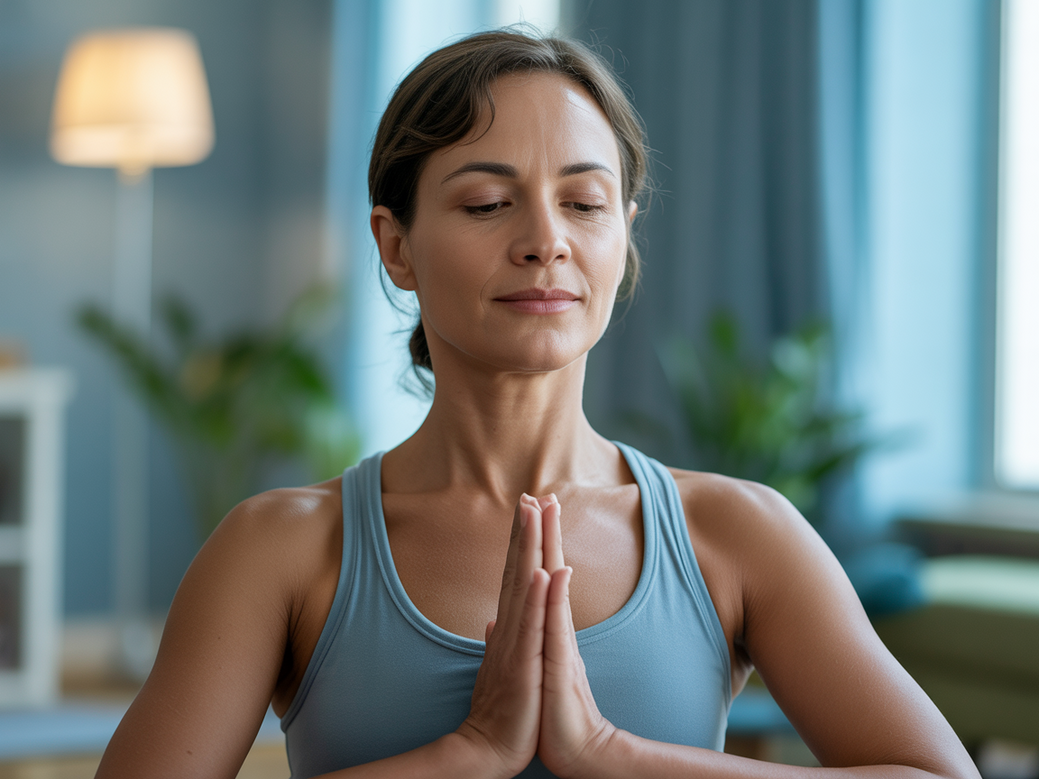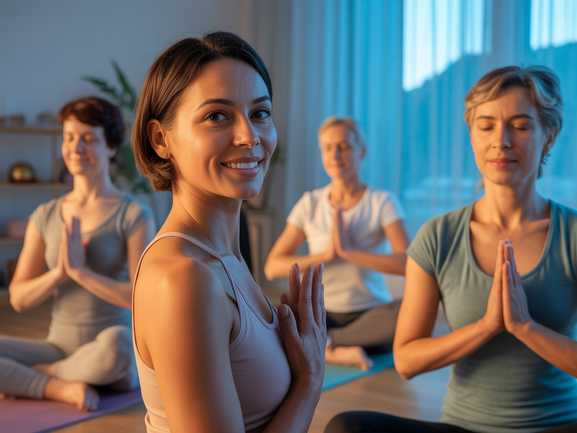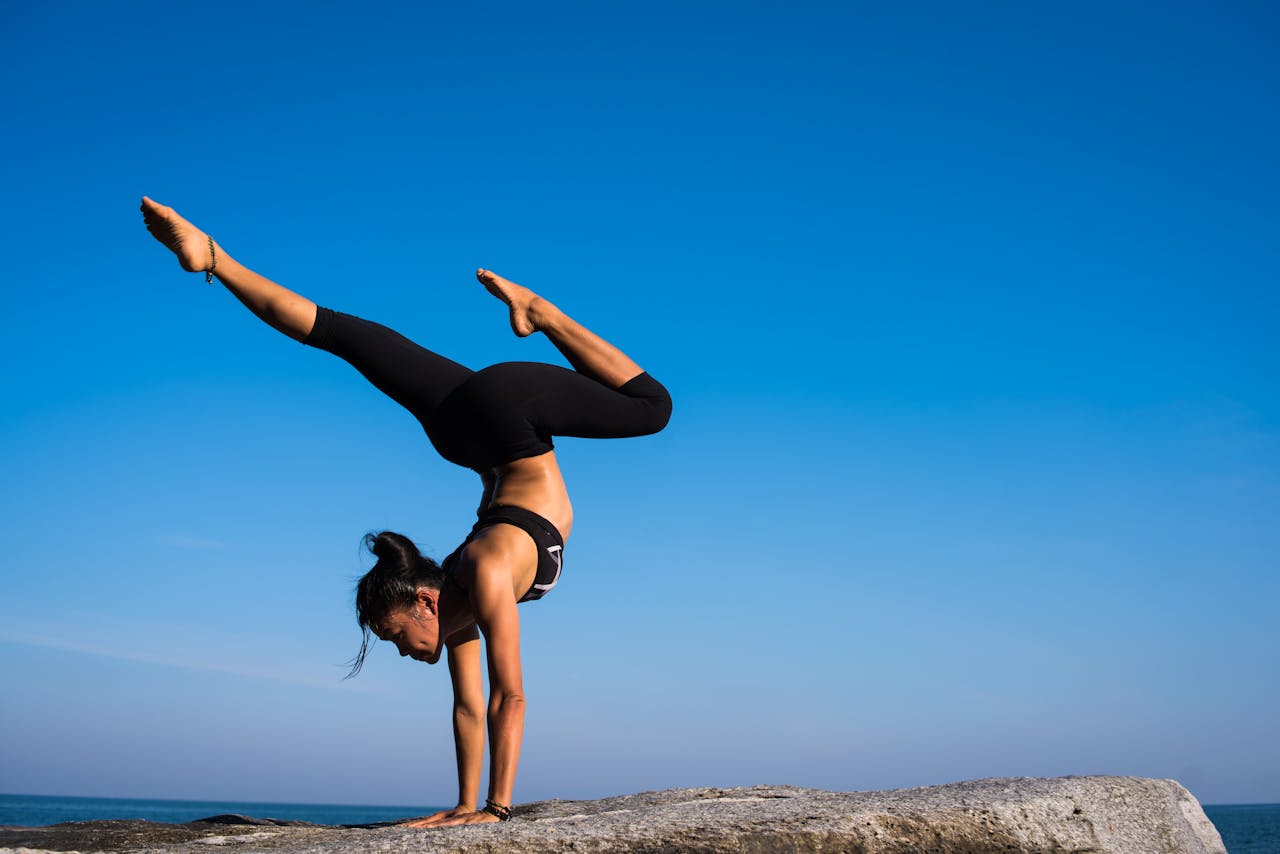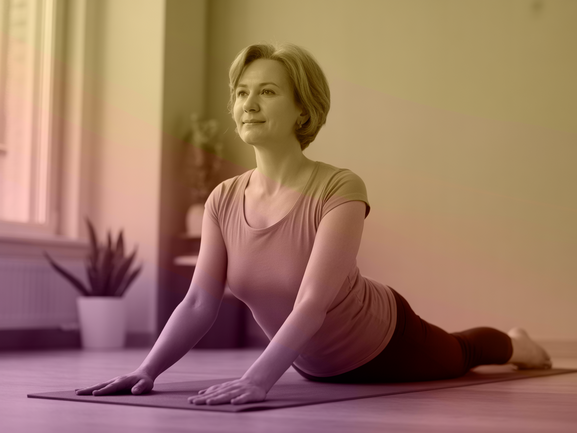Yoga for High Blood Pressure: A Complete Guide to Heart Health
Discover how gentle yoga for high blood pressure can be a transformative tool for your cardiovascular wellness. This comprehensive guide explores safe poses, essential breathing techniques, and a science-backed approach to lowering blood pressure and enhancing your heart health naturally. Learn how to start your journey today with expert advice inspired by the Vitalizen app.

Understanding Hypertension and the Need for Natural Solutions
High blood pressure, or hypertension, is often called the “silent killer” because it can quietly damage the body for years before symptoms develop. This condition forces your heart to work harder than normal, straining your arteries and increasing the risk of heart attack, stroke, and other serious cardiovascular diseases. According to the World Health Organization, an estimated 1.28 billion adults worldwide have hypertension, with many unaware of their condition.
While medication is a cornerstone of treatment, lifestyle modifications play a crucial role in managing blood pressure. Among these, the practice of yoga for high blood pressure has emerged as a powerful, evidence-based complementary therapy. It offers a holistic approach that addresses not just the physical, but also the mental and emotional stressors contributing to hypertension.
The Science of Serenity: How Yoga Regulates Blood Pressure
How can simple movements and controlled breathing create such a profound impact on your heart? The magic lies in yoga’s ability to regulate the autonomic nervous system (ANS), shifting it from a state of stress (the sympathetic “fight-or-flight” response) to one of calm (the parasympathetic “rest-and-digest” response). This shift initiates a cascade of physiological benefits perfect for managing hypertension.
Key Mechanisms Behind the Calm
When you consistently practice gentle yoga for high blood pressure, your body undergoes several key changes that directly support cardiovascular health:
- Stress Hormone Reduction: Yoga is scientifically proven to lower levels of cortisol, the body’s primary stress hormone. Chronically high cortisol can lead to elevated blood pressure, and by reducing it, yoga helps mitigate this major risk factor.
- Increased Vagal Tone: Specific breathing exercises (pranayama) stimulate the vagus nerve, the main nerve of the parasympathetic nervous system. A higher vagal tone is linked to a lower resting heart rate and better blood pressure regulation.
- Boosted Nitric Oxide Production: Gentle stretching and deep breathing can increase the body’s production of nitric oxide, a molecule that helps relax and widen blood vessels, thereby improving circulation and lowering blood pressure.
- Improved Blood Circulation: The gentle, flowing movements in a suitable yoga practice enhance circulation without putting undue stress on the heart, ensuring that oxygen and vital nutrients are delivered efficiently throughout your body.
- Enhanced Mind-Body Awareness: By cultivating a focus on your breath and bodily sensations, you become more attuned to your stress triggers. This heightened awareness empowers you to manage them proactively in your daily life, preventing stress-induced blood pressure spikes.
5 Essential and Safe Yoga Poses for High Blood Pressure
To practice yoga for high blood pressure, it’s vital to select poses (asanas) that promote relaxation and avoid strain. The following five poses are gentle, effective, and perfect for beginners. Remember to move slowly and never force your body into a position.
-
Cat-Cow Pose (Marjaryasana-Bitilasana)
This gentle spinal flow synchronizes breath with movement, releasing tension in the back and calming the mind. It’s an excellent warm-up for any yoga practice.
How to do it: Start on your hands and knees. As you inhale, drop your belly and look up (Cow). As you exhale, round your spine and tuck your chin (Cat). Repeat for 8-10 breaths. -
Bridge Pose (Setu Bandhasana)
A gentle inversion that can help calm the brain and reduce anxiety. It opens the chest and can help lower blood pressure when practiced restoratively.
How to do it: Lie on your back with knees bent and feet flat on the floor. Press into your feet to lift your hips. For a restorative version, place a block or bolster under your sacrum. -
Child’s Pose (Balasana)
The ultimate resting pose. It gently stretches the hips and back while encouraging deep, calming breaths, directly activating the relaxation response.
How to do it: From your hands and knees, sit back on your heels and fold forward, resting your forehead on the mat. Let your arms rest alongside your body. -
Legs-Up-The-Wall Pose (Viparita Karani)
This is one of the most beneficial poses for hypertension. It promotes venous drainage, soothes the nervous system, and reduces swelling in the legs and feet.
How to do it: Sit sideways next to a wall, then swing your legs up the wall as you lie back. Rest here for 5-15 minutes. -
Corpse Pose (Savasana)
Though it looks like just lying down, Savasana is a crucial pose for integrating the benefits of your practice. It allows your body to enter a state of deep rest, where blood pressure can naturally decrease.
How to do it: Lie flat on your back, arms and legs relaxed, palms facing up. Close your eyes and focus on your breath for at least 5 minutes.
Important Note: Avoid poses that place the head below the heart for extended periods or require significant straining, such as intense inversions like Headstand or Shoulderstand.
Breathing Techniques (Pranayama) to Lower Blood Pressure Instantly
Your breath is your most powerful tool for managing blood pressure. Pranayama, the yogic practice of breath control, can have an immediate calming effect on the nervous system. Here are two simple yet potent techniques:
- Diaphragmatic (Belly) Breathing: Lie on your back and place one hand on your belly. Inhale slowly through your nose, feeling your belly rise. Exhale slowly, feeling your belly fall. This is the body’s most efficient way to breathe and is profoundly relaxing.
- 4-7-8 Breathing: Inhale quietly through your nose for a count of 4, hold your breath for a count of 7, and exhale completely through your mouth for a count of 8. Repeat 3-5 times. This technique is a natural tranquilizer for the nervous system.
What Are the Main Benefits of Yoga for Your Heart?
Incorporating a regular yoga for high blood pressure practice into your routine offers more than just relaxation. The benefits for cardiovascular wellness are measurable and significant, contributing to long-term health and vitality.
- Lower Blood Pressure: Consistent practice helps naturally lower both systolic and diastolic blood pressure readings over time. A 2025 meta-analysis in the Journal of Human Hypertension found an average reduction of 5 mmHg in systolic pressure.
- Reduced Resting Heart Rate: By promoting a state of calm, yoga conditions the heart to work more efficiently, leading to a lower resting heart rate and reduced strain on the cardiovascular system.
- Improved Heart Rate Variability (HRV): A higher HRV indicates a healthy, adaptable cardiovascular system that can easily switch between stress and rest states. Yoga is one of the most effective non-pharmacological ways to improve it.
- Better Sleep Quality: Insufficient or poor-quality sleep is a major risk factor for hypertension. The deeply relaxing effects of a gentle yoga practice can lead to more restorative sleep, which is essential for heart health.
- Enhanced Emotional Regulation: Yoga provides tools to manage stress, anxiety, and depression—emotional factors that are directly linked to high blood pressure.
💡 Ready to feel the calm? The Vitalizen App offers guided meditations and gentle yoga sessions designed specifically to improve HRV and promote deep, restorative sleep.
Which Gentle Yoga Style Should You Choose?
When heart health is a priority, choosing the right style of yoga is paramount. Vigorous, fast-paced, or heated styles can be counterproductive. Instead, focus on modalities that are gentle, supportive, and safe. The Vitalizen app, co-founded by international yoga instructor Luzia, specializes in these exact approaches.
| Yoga Style | Description | Best For | Intensity |
|---|---|---|---|
| Gentle Yoga | A slow-paced class focusing on basic poses, mindful stretching, and breathwork. Poses are held for shorter durations with an emphasis on safety and alignment. | Beginners, daily stress reduction, and building a consistent practice. | Low |
| Restorative Yoga | Uses props like pillows and blankets to completely support the body in restful poses, which are held for several minutes to trigger deep relaxation. | Nervous system regulation, profound stress relief, and physical recovery. | Very Low |
| Chair Yoga | A modified practice where poses are performed while seated or using a chair for support, making yoga accessible to everyone. | Those with limited mobility, balance concerns, or for a quick office break. | Very Low |
How to Start Your Yoga Practice Safely: A 3-Step Guide
Starting a new routine can feel daunting, but your journey with yoga for high blood pressure can be simple and empowering. Prioritize safety and listen to your body to build a sustainable and beneficial practice.
- Consult Your Doctor: Before you begin, have a conversation with your healthcare provider. Discuss your intention to practice yoga and ensure it’s appropriate for your specific health profile. This is the most important first step.
- Choose the Right Guidance: Seek out a qualified instructor experienced in therapeutic yoga or use a specialized program like the Vitalizen App, which curates content for heart health. Avoid generic, fast-paced classes.
- Start Small and Be Consistent: You don’t need an hour-long session. The benefits of yoga come from consistency, not duration. Start with just 10-15 minutes a day and gradually build from there.
Why Was the Vitalizen App Created?
Luzia, an international yoga instructor with over a decade of experience, co-created Vitalizen after recognizing a critical gap in the digital wellness space. “I saw so many people who could benefit from yoga but were intimidated by the pretzel poses and competitive atmosphere of mainstream apps,” she explains. Vitalizen was born from a desire to create a safe, non-intimidating sanctuary for individuals managing health conditions like hypertension.
The app provides gentle yoga practices and meditation for heart health, making it perfect for absolute beginners. It’s a tool designed to bring the healing power of mindful movement from an expert-led studio directly into your living room. If you want to learn more about our philosophy, discover What is Vitalizen.app?
🎯 Ready to take the first step? Start your wellness journey with Vitalizen today and discover a practice that truly cares for your heart.
Frequently Asked Questions (FAQ)
Is yoga safe for someone with high blood pressure?
Yes, but it is crucial to choose the right kind. Gentle, restorative, and chair yoga are highly beneficial and safe. Always avoid intense, heated, or strenuous styles. We strongly recommend consulting your doctor before starting any new exercise regimen. The Vitalizen app specializes in these gentle forms of yoga.
How soon can I see results from practicing yoga for high blood pressure?
Many people report feeling calmer immediately after their first session. With consistent practice (3-5 times per week), measurable changes in blood pressure and resting heart rate can often be observed within a few weeks.
I’m not flexible at all. Can I still do yoga?
Absolutely! This is a common myth. Yoga is not about achieving perfect poses; it’s about connecting with your body. Flexibility is a benefit of the practice, not a requirement to start. Our beginner-friendly classes on the Vitalizen app are designed for every body.
What poses should I avoid if I have high blood pressure?
As a general rule, avoid deep forward folds, strenuous balancing poses, and intense inversions where the head is below the heart for a long time (like Headstand and Shoulderstand). Always listen to your body and avoid anything that causes strain or dizziness.
Do I need any special equipment to start?
No, you don’t need special equipment. A comfortable space on a carpeted floor is enough to begin. As you progress, a yoga mat can be helpful. For restorative yoga, you can use household items like pillows and blankets for support.
Further Reading and Authoritative Sources
Your journey to better heart health is a marathon, not a sprint. We encourage you to explore more from credible sources:
- The Yoga-Heart Connection – Johns Hopkins Medicine
- Hypertension and Complementary Health Approaches – National Center for Complementary and Integrative Health (NCCIH)



